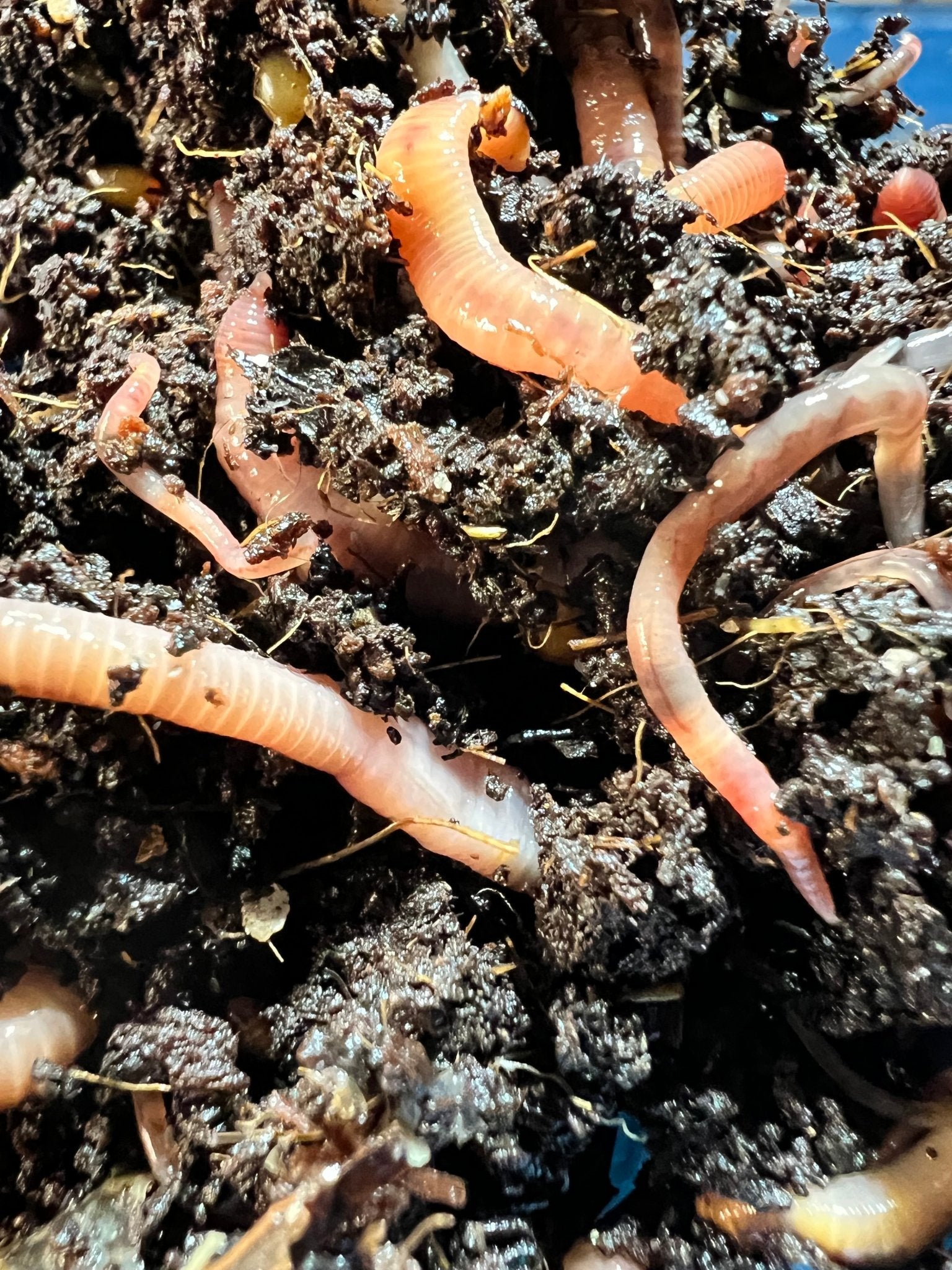Red Wiggler Worms up for sale - Sustainable Waste Administration Remedy
Red Wiggler Worms up for sale - Sustainable Waste Administration Remedy
Blog Article
Red Wiggler Worms Demystified: Unlocking the Secrets of Vermiculture for Greener Living and Nutrient-Rich Soil
In the world of lasting methods for enhancing dirt high quality and advertising eco-conscious living, red wiggler worms play an essential yet typically neglected duty. Red Wiggler Worms. Understanding the complexities of caring for these worms, maximizing their setting, and utilizing their castings can lead to a greener way of life and healthier dirt for plants to flourish.
The Role of Red Wiggler Worms
Red Wiggler worms play a vital duty in composting systems by successfully breaking down organic issue into nutrient-rich spreadings. These voracious eaters eat a selection of organic materials, such as kitchen scraps, yard waste, and paper items. As they feed, the worms' digestion procedures damage down the raw material into a penalty, dark, and nutrient-dense product understood as worm spreadings or vermicompost.
The castings produced by Red Wiggler worms are very beneficial for soil health and plant development. They are rich in crucial nutrients like potassium, phosphorus, and nitrogen, which are vital for sustaining healthy and balanced plant advancement. Additionally, worm spreadings contain helpful germs and enzymes that aid enhance dirt structure, increase water retention, and boost nutrient uptake by plants.
Benefits of Vermicomposting

It enhances soil framework, enhances dirt aeration, and enhances soil dampness retention. Vermicompost also enhances the dirt with essential nutrients like nitrogen, phosphorus, and potassium, advertising plant growth and general dirt fertility.
Furthermore, vermicomposting supports sustainable gardening practices by offering a chemical-free and natural choice to synthetic fertilizers. Red Wiggler Worms. This eco-friendly method not just enhances the dirt but additionally helps in reducing reliance on hazardous chemicals, advertising a greener and much more sustainable method of horticulture
Establishing a Worm Container
When establishing a worm container for vermicomposting, correct setup is essential to ensure the success of the composting process. The primary step in establishing up a worm container is picking an ideal container. This can be a plastic bin or wooden box that gives adequate space for the worms to walk around and has proper drainage holes to avoid waterlogging. Next, a bedding product such as shredded newspaper, cardboard, or coconut coir need to be included to the bin. This bed linens supplies a comfortable atmosphere for the worms and aids keep wetness see this site levels.
After adding the bed linen, introduce the red wiggler worms to the bin. It is recommended to begin with a little number of worms and progressively enhance as they increase. The worms must after that be given with food scraps such as vegetables and fruit peels, coffee grounds, and eggshells. It is important to prevent adding meat, dairy, oily, or salted foods to stop bring in bugs and developing unpleasant odors.
Consistently monitor the dampness levels and temperature level in the worm bin to guarantee optimal problems for the worms. With proper arrangement and maintenance, the worm bin will pop over to these guys successfully transform natural waste right into nutrient-rich compost for your plants and garden.
Harvesting Worm Spreadings
To successfully gather nutrient-rich worm castings from your vermicomposting system, an organized harvesting method is important. When it comes time to harvest the worm spreadings, there are a few essential actions to comply with to ensure an effective process.

Troubleshooting Common Issues
Recognizing and addressing common difficulties that may arise during the vermicomposting procedure is critical for preserving a effective and healthy worm bin. One typical concern that vermicomposters experience my explanation is overfeeding. Including excess food scraps can lead to a build-up of dampness and acidity in the worm container, potentially harming the worms. To avoid this, feed the worms in moderation, ensuring that the food scraps are adequately broken down before adding more. One more problem is unpleasant odors emanating from the worm bin. Foul scents suggest anaerobic problems, commonly brought on by overwatering or poor ventilation. To correct this, change the dampness levels by including dry bed linens products like shredded newspaper or cardboard and increase aeration by transforming the bed linen on a regular basis.
Additionally, if the worm population is decreasing or the worms show up unhealthy, maybe because of environmental stress factors such as extreme temperatures or pH levels. Keeping track of these elements and making required modifications is essential for the wellness of the worms. By repairing these usual concerns quickly, vermicomposters can ensure a effective and smooth vermicomposting procedure while maintaining a growing worm population.

Verdict
In conclusion, red wiggler worms play a critical function in vermiculture by breaking down natural matter right into nutrient-rich soil. Establishing up a worm container is crucial for successful vermiculture, and harvesting worm spreadings supplies useful compost for gardening.
As they feed, the worms' gastrointestinal procedures damage down the organic issue right into a penalty, dark, and nutrient-dense material known as worm castings or vermicompost.
The spreadings created by Red Wiggler worms are extremely advantageous for dirt health and plant development. Adding excess food scraps can lead to an accumulation of wetness and acidity in the worm bin, potentially harming the worms.Furthermore, if the worm populace is decreasing or the worms show up harmful, it might be due to ecological stress factors such as severe temperatures or pH degrees. Setting up a worm container is essential for effective vermiculture, and harvesting worm castings offers useful compost for horticulture.
Report this page